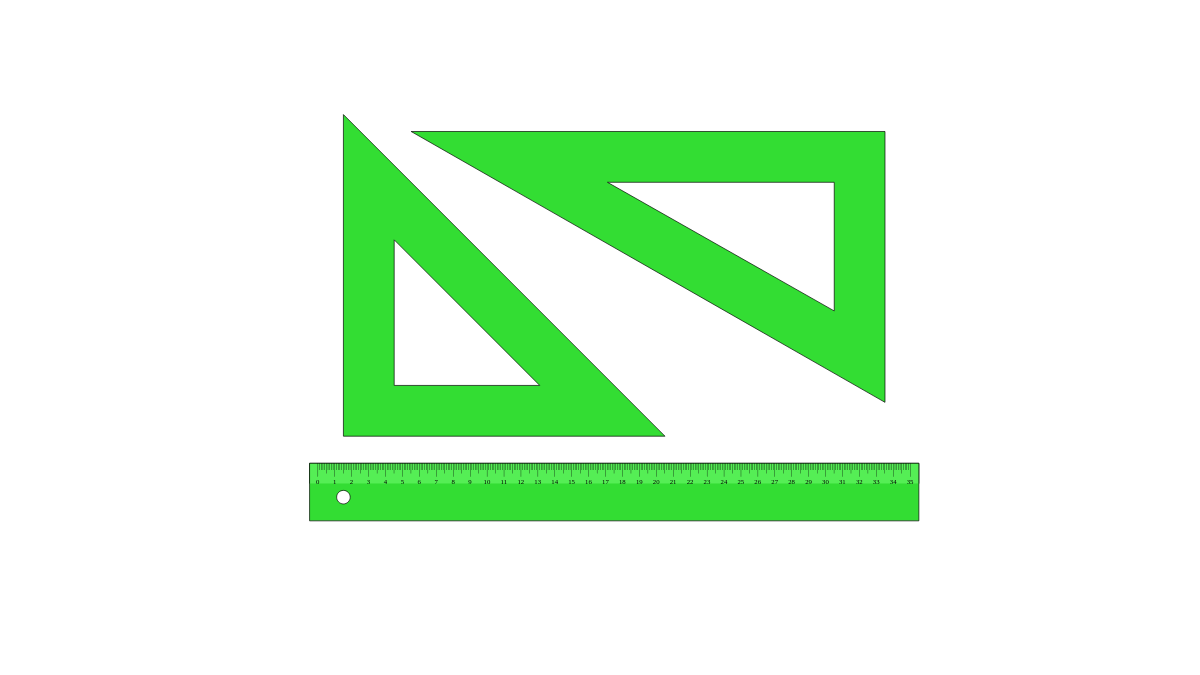Discover the complete guide on set squares—explaining their types, uses, and benefits in technical drawing. Learn how they enhance accuracy and precision in design.
also read: https://usaenliinea.com/understanding-contra-entry-in-accounting-meaning-examples-and-importance/
What Are Set Squares? A Complete Guide
Set squares are essential tools in the world of technical drawing, drafting, geometry, and architectural design. Whether you’re a student, an engineer, or a professional drafter, using a set square ensures precision and clean angular measurements. This article explores everything about set squares—from their types and construction to their practical applications—making it a valuable resource for beginners and experienced users alike.
What is a Set Square?
A set square is a triangular-shaped drawing instrument used to draw straight lines at specific angles. Typically made from transparent plastic or acrylic, set squares assist drafters in drawing consistent 30°, 45°, 60°, and 90° angles. They are used in conjunction with a drawing board, T-square, or ruler.
Set squares help maintain the accuracy and neatness of technical drawings by offering predefined angles, making them indispensable in fields like architecture, mechanical engineering, and geometry education.
Types of Set Squares
Set squares usually come in two main types, each offering unique angle measurements suited for different purposes. These are:
1. 45° Set Square
This type of set square is shaped like an isosceles right triangle, offering three specific angles:
- 45°,
- 45°, and
- 90°.
It is widely used for creating perpendicular lines and for bisecting right angles. This set square is especially common in mechanical drawing and is often paired with the 30°/60° set square for versatility.
2. 30°/60° Set Square
This set square is a scalene right triangle, providing the following angle measurements:
- 30°,
- 60°, and
- 90°.
This variant is particularly useful for architectural drafting and advanced geometric constructions, where less common angles are required.
Some advanced versions combine protractors or bevel edges for additional flexibility and ease of use.
Materials Used in Set Squares
While most modern set squares are made from transparent plastic, there are a few other materials used based on durability and accuracy requirements. The following table compares common materials used:
| Material | Characteristics | Common Usage |
|---|---|---|
| Plastic (Acrylic) | Lightweight, transparent, affordable | General student and office use |
| Polycarbonate | High durability, clear visibility | Professional drafting |
| Metal (Aluminum) | Durable, heavy, not transparent | Industrial and mechanical drafting |
| Wood | Traditional, less precise | Rare, mostly obsolete |
Transparency is a crucial feature, as it allows users to see underlying lines for accurate alignment.
How to Use a Set Square
Using a set square effectively requires correct placement and combination with other tools like a T-square or ruler. Here’s a general method:
- Align the base of the set square with the T-square on the drawing board.
- Mark the desired angle by running the pencil or pen along the appropriate edge.
- Flip the set square if you need to draw angles in the opposite direction.
For enhanced functionality, the two types of set squares are often used together. For instance, placing a 30°/60° set square against a 45° set square can help create complex angle combinations like 15°, 75°, or 105°.
Applications of Set Squares
Set squares are used across various domains for their precision and simplicity. The most common applications include:
In Technical Drawing
In engineering and architectural drawings, maintaining angle accuracy is critical. Set squares help maintain consistency across components like elevation lines, cross-sections, and detailed schematics.
In Education
Students in geometry classes use set squares to understand angle relationships, symmetry, and triangle properties. It builds foundational skills for higher mathematical and design applications.
In Design and Art
Graphic designers and illustrators use set squares for creating symmetrical patterns, layouts, and stylized texts. They are also essential in drafting user interface wireframes and grid-based designs.
Set Squares vs. Protractors vs. T-squares
Understanding how set squares differ from other measuring and drawing instruments helps in choosing the right tool. Below is a comparative table:
| Feature | Set Square | Protractor | T-square |
|---|---|---|---|
| Angle Accuracy | High (fixed) | Medium (adjustable) | High (for straight lines) |
| Primary Use | Drawing fixed angles | Measuring and drawing various angles | Drawing horizontal lines |
| Material | Plastic/Metal | Plastic/Metal | Plastic/Wood |
| Portability | High | High | Medium |
Set squares excel when the need is to repeatedly draw specific angles quickly and precisely.
Advantages of Using Set Squares
Set squares bring several benefits, particularly when clarity and accuracy are priorities in drawings. These advantages include:
- Speed: Predefined angles save time in constructing lines.
- Precision: Reduces human error while drawing.
- Versatility: Can be combined with other tools for multi-angle setups.
- Durability: Especially true for high-grade materials like polycarbonate or metal.
They are also relatively affordable and easy to use, making them accessible for learners and professionals alike.
Maintenance Tips for Set Squares
To ensure long-lasting performance and accuracy, it’s important to care for your set squares properly. Here are some practical tips:
- Avoid direct sunlight: Prolonged exposure can warp plastic.
- Clean regularly: Use a microfiber cloth to wipe off dust or pencil marks.
- Store flat: To avoid bending or warping.
- Handle gently: Prevent chipping on edges which can affect angle accuracy.
Taking good care of your set squares ensures that they continue providing precise results over time.
Digital Set Squares: Modern Alternatives
In today’s digital age, many professionals are moving toward CAD (Computer-Aided Design) tools. Digital set square functionalities are often built into design software such as AutoCAD, SolidWorks, and Adobe Illustrator. These tools replicate traditional set square functions while offering enhanced flexibility, automation, and scalability.
However, physical set squares remain irreplaceable in early-stage sketching, teaching environments, and hands-on design work.
FAQs About Set Squares
Here are 10 unique FAQs to further enrich your understanding of set squares:
- Can set squares be used on tablets or touchscreens?
No, traditional set squares are designed for paper. However, digital drawing tools simulate their function. - Are there foldable set squares?
Yes, some modern versions are foldable or collapsible for portability. - What is the standard size of a set square?
Common sizes include 6-inch, 8-inch, and 10-inch versions. - Can I draw circles using a set square?
Not directly. Use a compass for circles; set squares are for straight lines and angles. - Are wooden set squares still in use?
Rarely. They are mostly obsolete but may be found in traditional art settings. - Can left-handed users use set squares easily?
Yes, most set squares are ambidextrous in design. - Do set squares come in metric and imperial units?
Yes, some versions have markings in both mm/cm and inches. - How do I check if my set square is still accurate?
Place it on graph paper or test angles with a protractor to confirm alignment. - Is it possible to 3D print a custom set square?
Yes, with a precise design file, you can 3D print custom shapes and sizes. - Are there apps that simulate set square functions?
Yes, many geometry and drafting apps offer virtual tools for drawing angles and straight lines.
Conclusion
Set squares are foundational tools in the world of technical drawing and geometry. Their ability to offer quick and precise angle construction makes them indispensable in engineering, architecture, design, and education. Whether made of plastic, metal, or advanced composites, set squares offer functionality that bridges the gap between traditional drawing and modern design.
By understanding the types, materials, usage techniques, and benefits, users can make informed decisions about when and how to use a set square. Even as digital tools evolve, the simplicity and effectiveness of the humble set square continue to make it a trusted companion for precision drawing.
also read: https://usaenliinea.com/zuyomernon-system-basketball-the-future-of-strategic-game-play/
also read: https://usaenliinea.com/faibloh/
also read: https://usaenliinea.com/skip-the-germs-a-comprehensive-guide-to-healthier-living/
also read: https://usaenliinea.com/florence-elsie-ellis/
also read: https://usaenliinea.com/shani-levni/
also read: https://usaenliinea.com/ttps-docs-google-com-document-pii-deleted/
also read: https://usaenliinea.com/understanding-the-pragmatic-juara100-org-medal-system/
also read: https://usaenliinea.com/thalamovies-com-a-complete-guide-to-the-emerging-movie-streaming-site/







